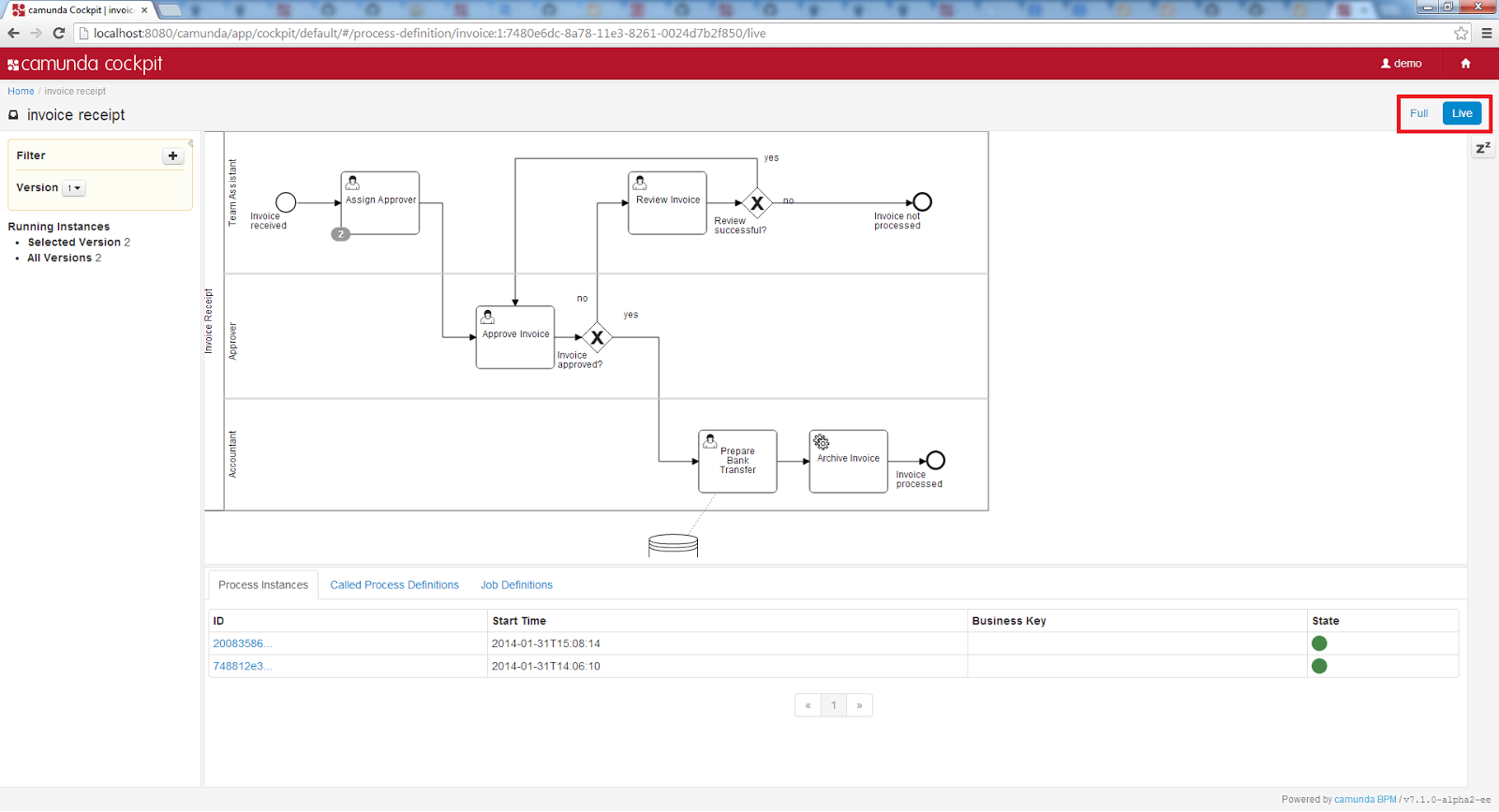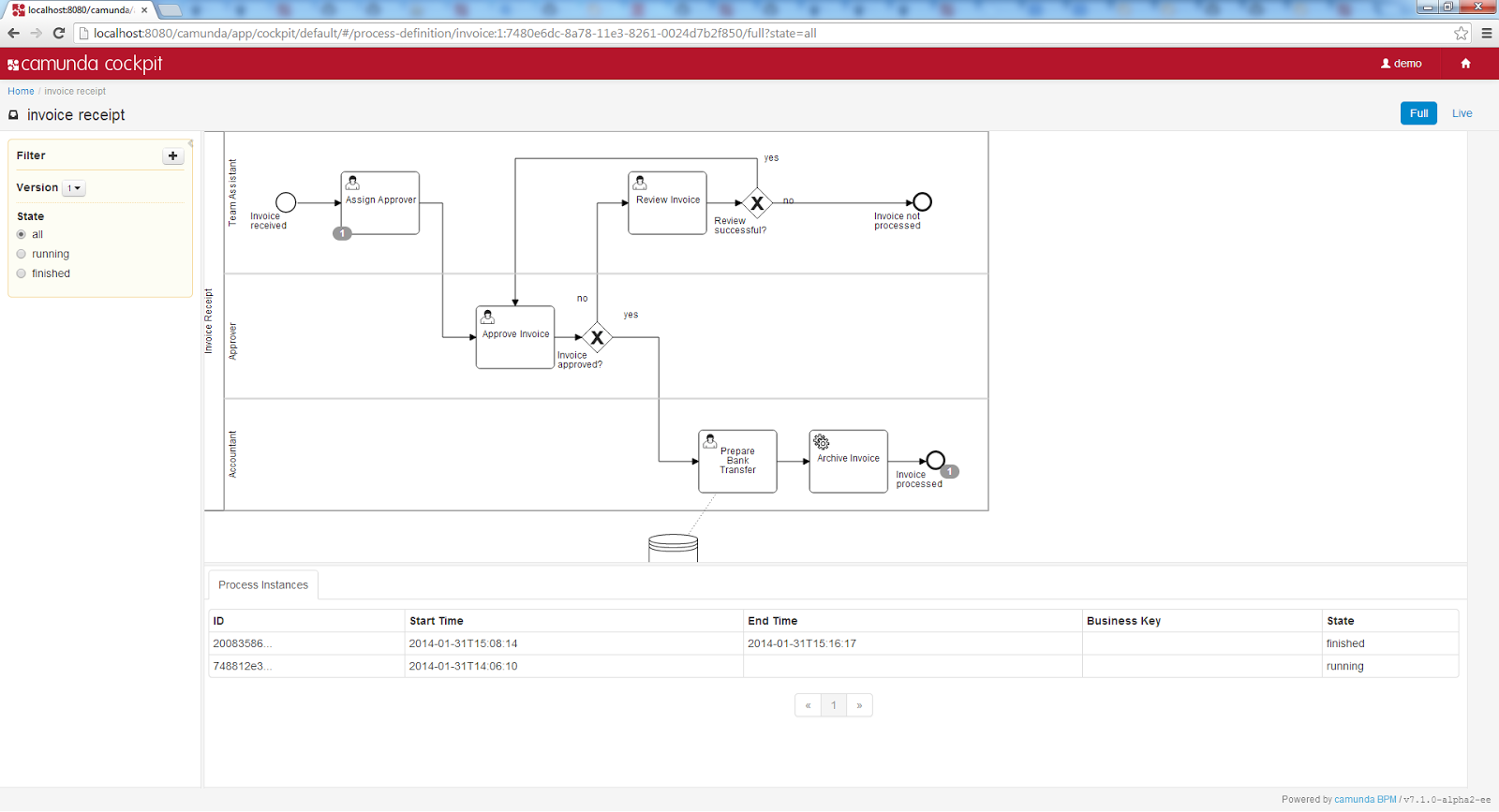It was a hard time of two months without a new Camunda BPM release, but the waiting came to an end today. We are happy to announce the first release of 2014: Camunda BPM 7.1.0-alpha2. The highlights of this release are:

- engine:
- enhance PVM Atomic Operation and Graph Model to provide facility for an activity to cancel a scope or be executed concurrently to activities in the same scope. This refactoring has the following positive effects:
- write History for Boundary Events, Intermediate Catch Events following an Event Based Gateway
- Execution Listeners on cancel scope / concurrent activities now work proper
- and fixed a lot of further bugs
- a Receive Task with a message reference can be triggered like an ordinary event (docs)
- query after Historic Activity Statistics
- enhance PVM Atomic Operation and Graph Model to provide facility for an activity to cancel a scope or be executed concurrently to activities in the same scope. This refactoring has the following positive effects:
- cockpit:
- use grunt to build client sides assets, manage client sides dependencies and fetch them
- show suspended Job Definitions on the process diagram
- add a view switcher to be able to write an own process definition or instance view as a plugin
- implement a new process definition view as a enterprise plugin to show historic process instances data
- performance test suite (GitHub)
- enterprise support for Oracle WebLogic 12c, jBoss EAP 6.1 and 6.2
- some contributions from Clint and Markus
In total, about 90 Issues have been closed during the last two months. For further details have look into the Release Notes and finally
Camunda BPMN model API
Another big thing is the Camunda BPMN model API to parse, create and edit BPMN 2.0 XML files. The BPMN model API has been implemented by Sebastian and the repository is accessible since today! A separate blog post is followed in short.
ASCII-driven-programming
We had a lot of discussions about how to provide the possibility for an activity to cancel a scope or be executed concurrently to activities in the same scope as native PVM Atomic Operations. In the course of the discussion we drew a lot of graphs for different cases (ie. interrupting and non-interrupting boundary events and interrupting and non-interrupting event sub processes) and discussed how the graphs should be transformed to support the behavior native. As a result we drew some “nice” ASCII pictures in the source code to describe how the source graph should be transformed to achieve the desired behavior.

You are welcome to have a closer look at it and give us some feedback 😉
Define your own view in cockpit
It is now possible to define your own views on process definitions and process instances in cockpit.

We used this new mechanism to implement an enterprise plugin containing a view which is based on historic process data, that includes finished process instances too.

Learn here how to develop a cockpit plugin and implement your own view.
What’s next?
The following weeks we will continue the work on the following topics: standalone eclipse modeler, monitoring of processes based on historic data in cockpit, non-interrupting message event subprocesses, audit trail of task etc. In three or four weeks we will release the next alpha version of Camunda BPM 7.1.
Until then try and test the current release of Camunda BPM and give us feedback!
